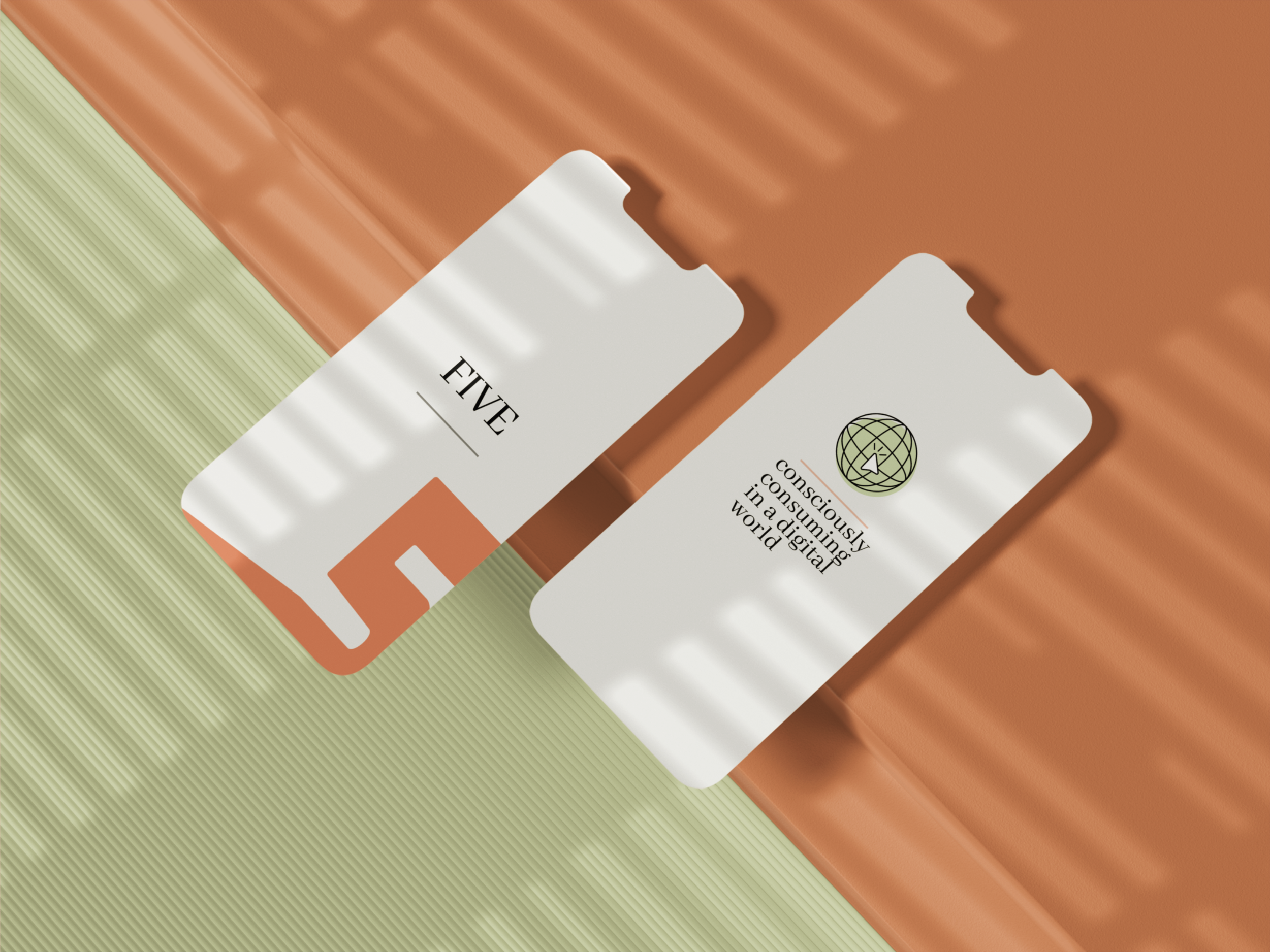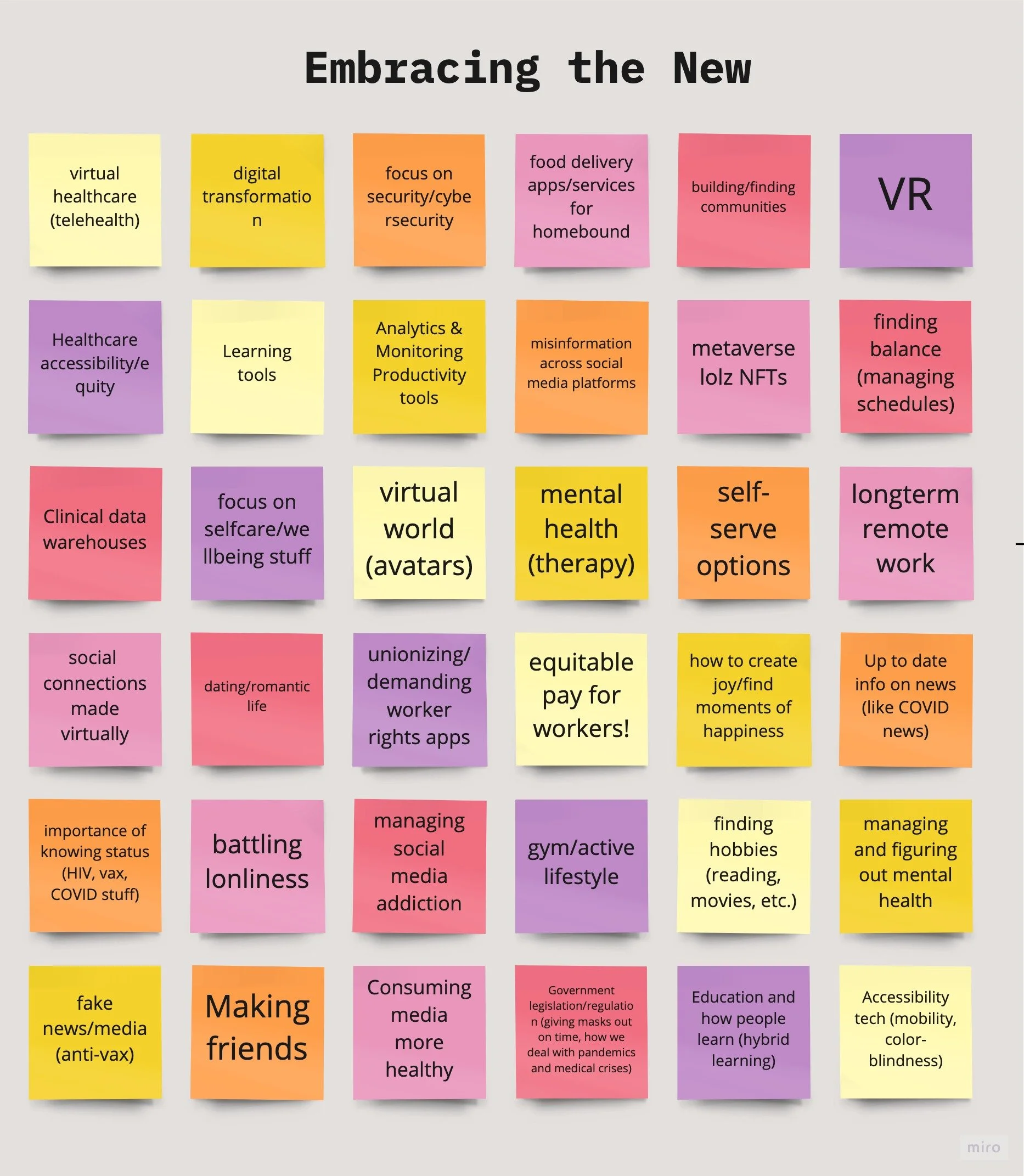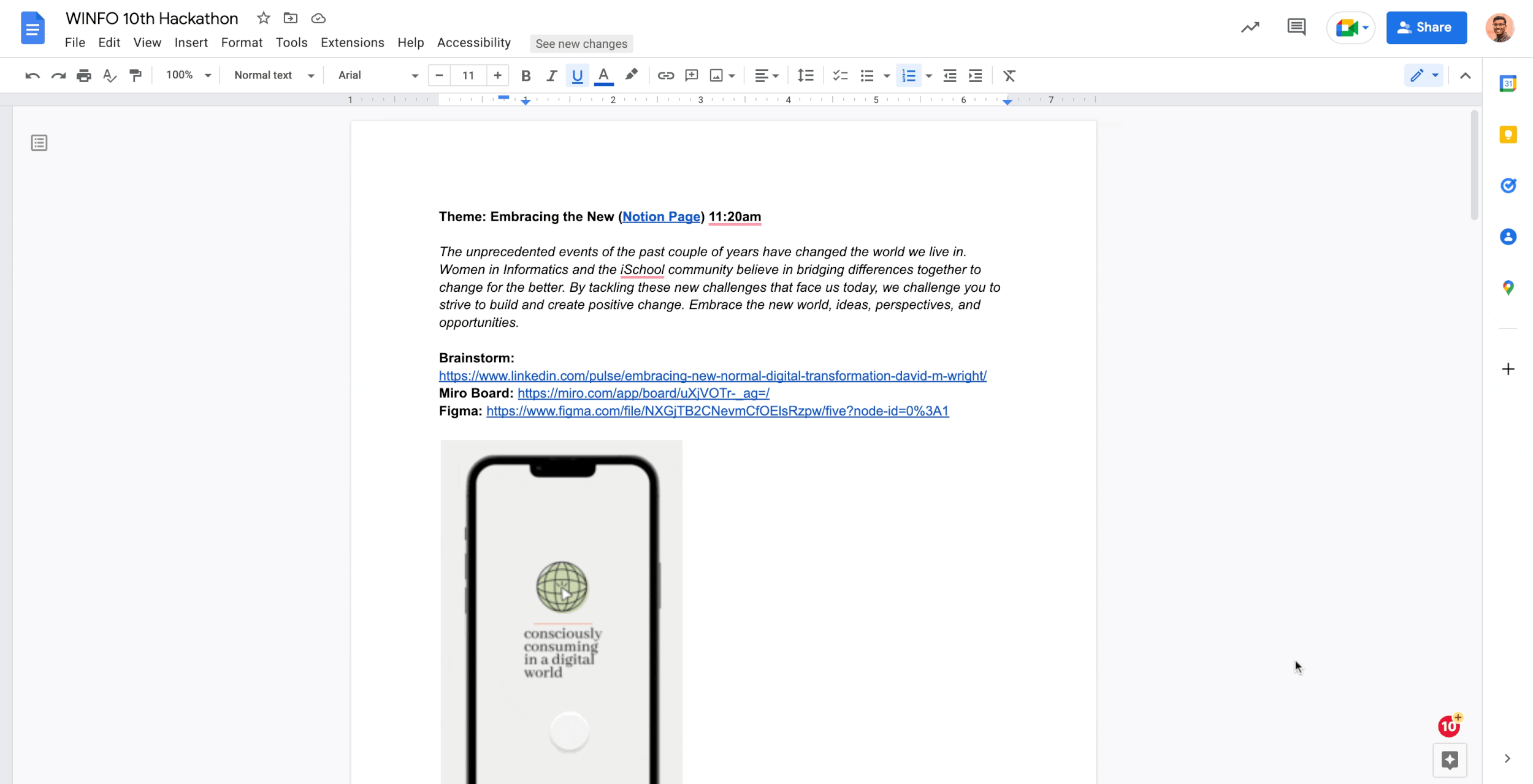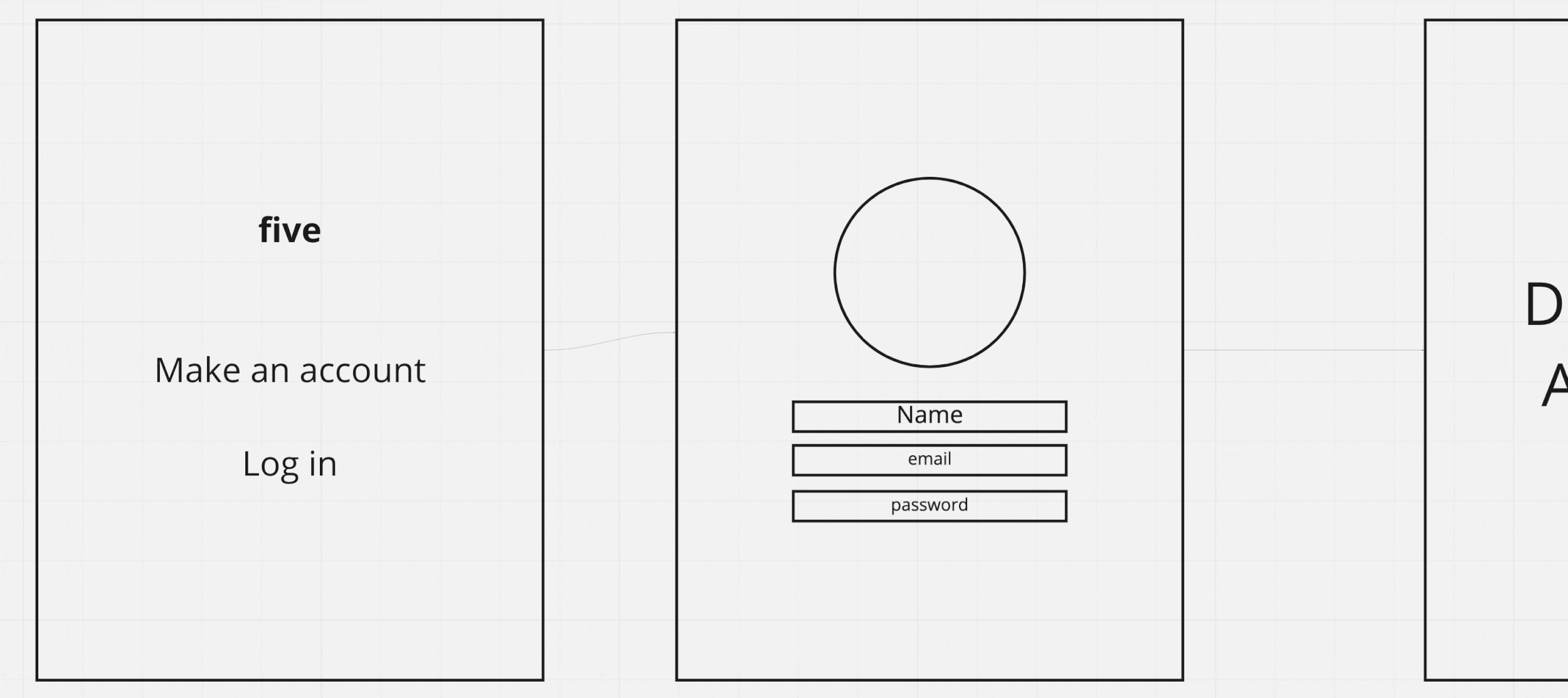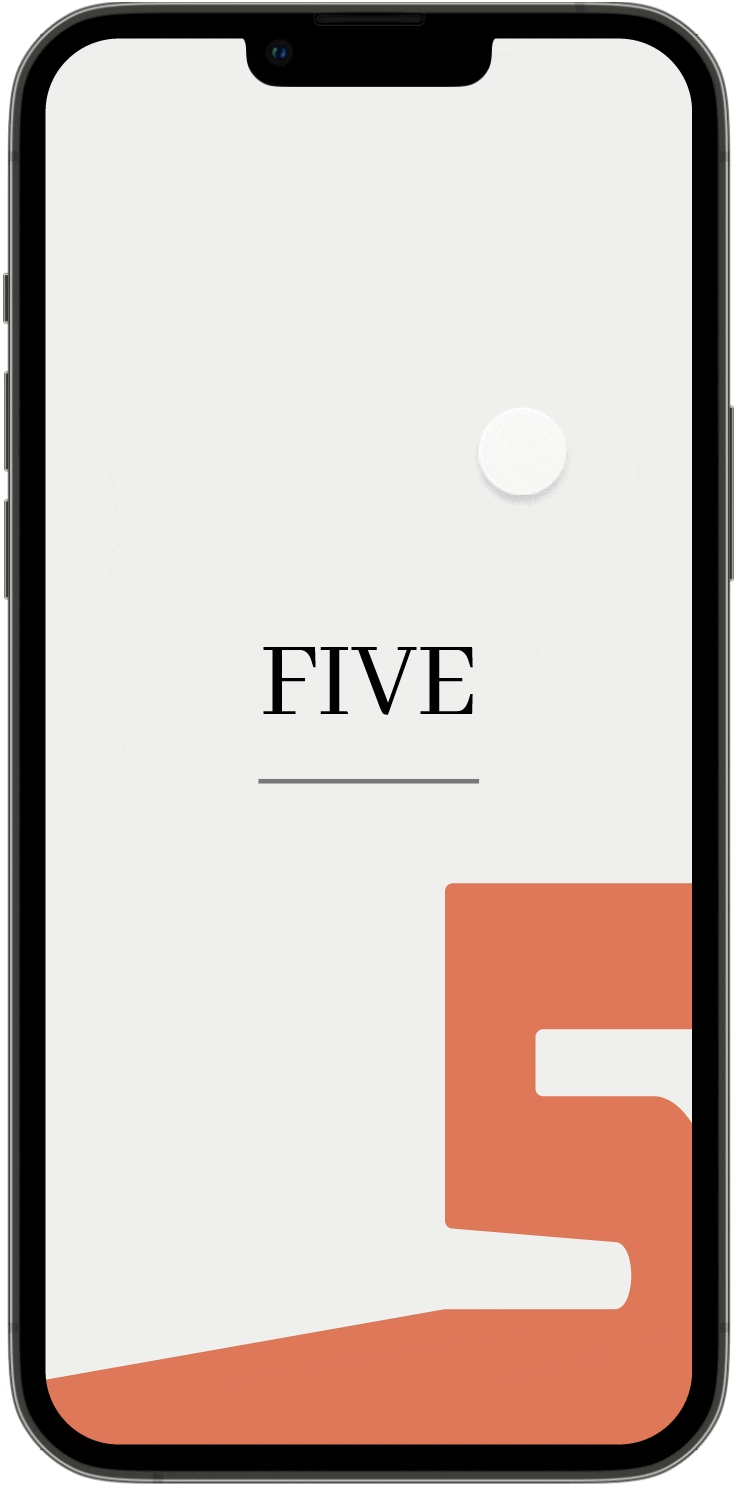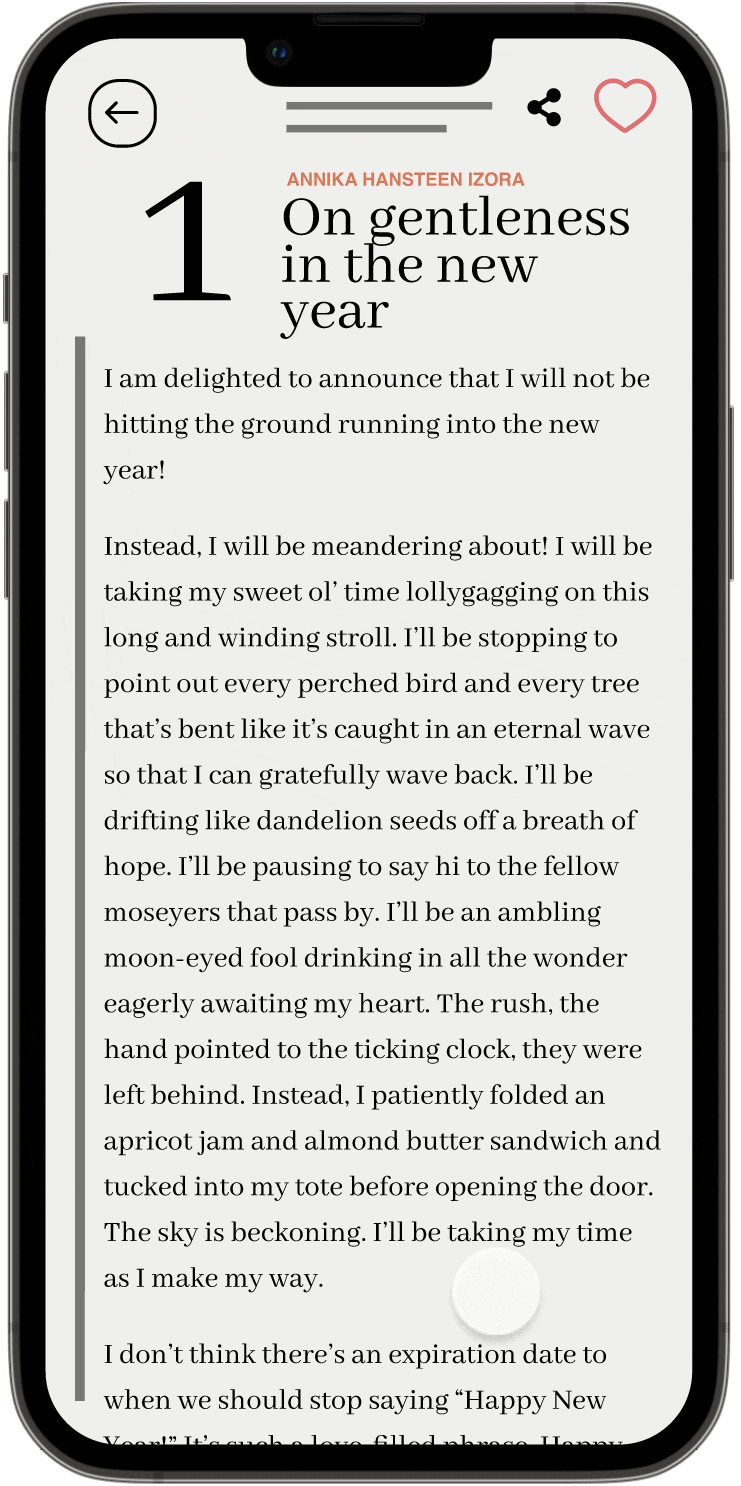Five: Curbing Media Overconsumption
January 2022 (2 days)
iOS Mobile App Best Design Finalist
-
I worked in a team of three to develop this app over the course of two days. I worked on all stages of the design process with special lead during branding and UI development.
-
Brainstorming, Branding, Conflict Resolution, Design Thinking, Figma, Google Drive, Ideation, Information Architecture, Miro, Paper Prototyping, Project Management, Prototyping, Storytelling, UI/UX Design, Wireframing
Overview
Tasked with ‘Embracing the New’ for the Women in Informatics (WINFO) 10th annual hackathon, our team of three developed Five—a media-curation app centered on intentional consumption. Competing against sixty teams over the course of two days, our team placed as a best design finalist.
The Challenge
Our project was meant to understand how the world had changed in the past couple of years from COVID-19 and embrace the new world, ideas, perspectives, and opportunities.
With ideas bouncing off the walls, we decided to take a systematic approach to figure out a problem space we were all intrigued and invested in. First, we brainstormed as many problem space interests as we could, thinking of roughly 36 interest-based ideas ranging from the virtual world to mental health to clinical data.
Next, we color-coded and grouped our ideas, splitting them into categories that felt more personal and structural.
For personal issues, we connected digital DIY with virtual reality and health with social life. For structural issues, we identified social media, learning, healthcare, and worker’s rights, with some ideas falling into multiple categories.
Following this, our team voted, finding that our health and social life category was the most popular and promising space. With this in mind, we discussed further, seeking to find a solution to media overconsumption
Exploratory Research
With a vested interest in media consumption, we began exploratory research. This phase of the hackathon was largely guided by curiosity and inquisitiveness. We wanted to understand how much media Americans were consuming and how they felt about the content they were consuming.
Here were some interesting findings…
→ The American individual, on average, consumes 63 gigabytes per day of media.
→ In 2012, the average daily social media usage of internet users worldwide was roughly 90 minutes; by 2022 it was 147 minutes.
→ “At the height of shelter-in-place orders across the U.S., weekly time spent watching connected TVs rose by more than 1 billion hours as the weeks passed.”
→ It was regularly cited that users found themselves more frequently overwhelmed by too much stimulation and too many choices instead of too few.
…and our takeaways.
With these findings, our team wanted to ideate on the core ways we could tackle media overconsumption. Thus, we created the following principles that would serve as our North Star in developing our solution:
→ We will promote healthy media consumption.
→ We will create a solution that is low-commitment and purposeful.
→ We will have UI that is non-intrusive and intuitive.
→ We will promote content that uplifts marginalized voices.
Low-Fidelity Prototype
Developing our low-fidelity prototype, we took concerns voiced in our research and personal experiences to create a simple UI that people of all ages could easily navigate. In dealing with media overconsumption, we wanted to create limits that healthily let people engage and explore using our app but not over-indulge. From this, the beginnings of Five emerged—we wanted a media app that only showed a select number of tailored multi-media content each day.
From here, our next step towards a high-fidelity prototype consisted of assessing what we could reasonably accomplish in the remaining time, how to convey the intent of our app, and creating an idea that truly was ‘Embracing the New’.
High-Fidelity Prototype
Going into the final stages of development, our exploratory research and insights from meeting with peers shaped what these mock-ups looked like. This culminated in the high-fidelity prototype that we presented at the end of the hackathon. For this final design, we opted for a fun design scheme that enabled users to feel like they were in a stress-free but inviting environment.
Five is a revolutionary app that curates daily content in a low-commitment, non-addictive, simple, just-for-fun way! Gathering and analyzing the interests of its user, your daily five could have a podcast episode, an article, or even a video! Sourced from a mixture of online and submitted content, Five seeks to show users engaging media while also prioritizing marginalized content creators. And the best part? You only get shown five pieces of content daily to minimize media overconsumption and highlight intentional media engagement.
Introductory Pages
→ Users can sign in or create an account.
→ Upon creating an account, users are shown an onboarding survey where they can select various interests (Beyoncé, neuroscience, boba, etc.). This will begin to create the algorithm for their top five of the day.
My Daily Five
→ Select the option to see ‘my five’ or a ‘random five’. This allows the user to choose whether they want to be shown algorithmized content.
→ Next, users are shown the numbers one through five. Once clicking on a number, they’ll be shown a piece of media. This may be a video, podcast, song, blog post, etc. This media will change every day.
Interacting with your Daily Five
→ Swipe up on media to see more information about the piece and heart media to let the algorithm know what you like. We wanted our app to be guided by positive engagement hence reacting to things we like versus highlighting what we don’t resonate with.
→ Once clicking on one of your five, you’ll see the rest of your daily five after returning to the main screen. This gamifies our app and keeps it interesting. Hearted media will be highlighted.
Settings
→ Update profile name, email, password information, and interests to be the most up-to-date.
→ Submit work to be featured. These submissions are reviewed by our team for quality with priority given to marginalized voices.
→ View your weekly fivebyFive. This data visualization lets people understand their consumption habits and share insights in a fun way.
Limitations
Creating Five, our biggest challenge was the amount of time we were given. Because the hackathon was only two days, we had to speed through the design process and weren’t able to get valuable user feedback that could’ve helped in developing a high-fidelity prototype.
Moreover, with a limited timeframe, we found ourselves running into conflict when having to make decisions at a quick rate. Thinking of ideas, choosing design standards for the project, the scope, etc., created spaces in the project development cycle where certain team members saw things differently. This meant we had to work through conflict quickly and effectively.
Future Iterations
→ Conducting more exploratory research to understand our problem space and what solutions exist in the competitive landscape.
→ Performing usability tests and user interviews to ensure our solution has feedback integrated into the process. I think this would ensure that we aren’t missing features or iterating on solutions that are missing the mark.
→ Creating a design document or branding document that outlines why we made the design decisions we made and how that contributes to the mission of Five
→ Fleshing out what the process for collecting content would look like, what type of content model it would fit in, how to visually show different media types, the amount of labor it would take to review work submissions and how to streamline this process.
Reflection
Ultimately, Five seeks to battle media consumption by highlighting themes of simplicity, no commitment, and engagement. Our media-curation app allows users of all ages to discover content that is personalized for them daily. With only five pieces of content shown every day, users can’t overindulge. Our hope, with this app, is that people can discover fulfilling spaces on the Internet responsibly. Working on Five, I learned many lessons:
Time can create pressure. The design process thrives best when given the appropriate time and space to flourish and develop. Rushing this process can result in team conflicts, misunderstandings, or various other issues. I found this out firsthand when realizing we only had two days to create a prototype of what ‘Embracing the New’ could look like. At the same time, this pressure was valuable to creating something quickly, and getting some really good ideas fleshed out without going in circles.
Design should serve a purpose. While I think my design has always served a purpose, working on Five gave me a clear understanding of how to make design decisions that were in line with our brand and what we were making. For instance, because we were trying to battle overconsumption, creating an interface that was simple, and purposefully restrained (i.e. not trying to sell the user anything, have ulterior motives, or be addictive) was the top priority. In fact, I think it’s largely why we placed as a design finalist.
Recognition can be really affirming. After doing all this work over the course of two days, it was cool to share our idea with the world and have people really resonate with our solution. People found our design to be really forward-thinking. Ideating about solutions, this project truly challenged my design standards and taught me to think against the grain sometimes to create something really valuable. It was amazing that people really enjoyed that.

